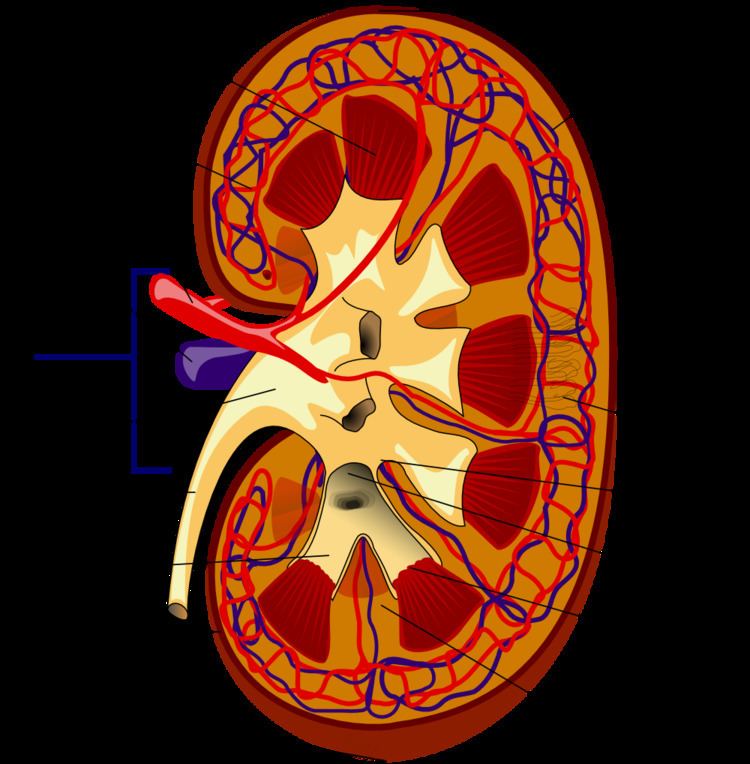Specialty cardiology ICD-9-CM 440.1 MedlinePlus 001273 | ICD-10 I70.1 DiseasesDB 11255 eMedicine med/2001 | |
 | ||
Renal artery stenosis is the narrowing of one of the renal arteries, most often caused by atherosclerosis or fibromuscular dysplasia. This narrowing of the renal artery can impede blood flow to the target kidney, resulting in renovascular hypertension – a secondary type of high blood pressure. Possible complications of renal artery stenosis are chronic kidney disease and coronary artery disease.
Contents
Signs and symptoms
Most cases of renal artery stenosis are asymptomatic, and the main problem is high blood pressure that cannot be controlled with medication. Decreased kidney function may develop if both kidneys do not receive adequate blood flow, furthermore some people with renal artery stenosis present with episodes of flash pulmonary edema.
Cause
Renal artery stenosis is most often caused by atherosclerosis which causes the renal arteries to harden and narrow due to the build-up of plaque. This accounts for about 90% of cases with most of the rest due to fibromuscular dysplasia. Fibromuscular dysplasia is the predominant cause in young patients, usually females under 40 years of age.
Pathophysiology
The pathophysiology of renal artery stenosis, leads to changes in the structure of the kidney that are most noticeable in the tubular tissue. If the stenosis is longstanding and severe, the glomerular filtration rate in the affected kidneys never recovers and (prerenal) kidney failure is the result.
Changes include:
Diagnosis
The diagnosis of renal artery stenosis can use many techniques to determine if the condition is present, a clinical prediction rule is available to guide diagnosis.
Among the diagnostic techniques are:
Atherosclerotic renal artery stenosis
It is initially treated with medications, including diuretics, and medications for blood pressure control. When high-grade renal artery stenosis is documented and blood pressure cannot be controlled with medication, or if renal function deteriorates, surgery may be resorted to. The most commonly used procedure is a minimally-invasive angioplasty with or without stenting. It is unclear if this approach yields better results than the use of medications alone. It is a relatively safe procedure. If all else fails and the kidney is thought to be worsening hypertension and revascularization with angioplasty or surgery does not work, then surgical removal of the affected kidney (nephrectomy) may significantly improve high blood pressure.
Fibromuscular dysplasia
Angioplasty with or without stenting is the best option for the treatment of renal artery stenosis due to fibromuscular dysplasia.
